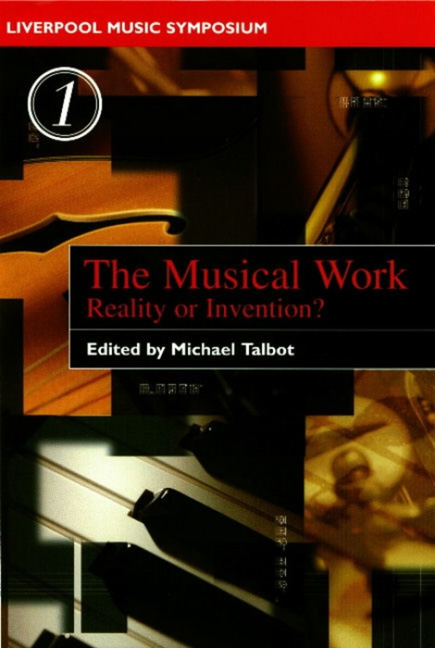Book contents
- Frontmatter
- Contents
- Notes on Contributors
- Introduction
- 1 Some Thoughts on the Work in Popular Music
- 2 Intertextuality and Hypertextuality in Recorded Popular Music
- 3 Work-in(g)-Practice: Configurations of the Popular Music Intertext
- 4 Work and Recordings: The Impact of Commercialisation and Digitalisation
- 5 The Practice of Early-Nineteenth-Century Pianism
- 6 Looking Back at Ourselves: The Problem with the Musical Work-Concept
- 7 ‘The Work’: An Evaluative Charge
- 8 The Work-Concept and Composer-Centredness
- 9 The Musical Artwork and its Materials in the Music and Aesthetics of Busoni
- 10 Re-composing Schubert
- 11 ‘On the Problems of Dating’ or ‘Looking Backward and Forward with Strohm’
- Index of Musical Compositions and Collections
- Index of Personal Names
3 - Work-in(g)-Practice: Configurations of the Popular Music Intertext
- Frontmatter
- Contents
- Notes on Contributors
- Introduction
- 1 Some Thoughts on the Work in Popular Music
- 2 Intertextuality and Hypertextuality in Recorded Popular Music
- 3 Work-in(g)-Practice: Configurations of the Popular Music Intertext
- 4 Work and Recordings: The Impact of Commercialisation and Digitalisation
- 5 The Practice of Early-Nineteenth-Century Pianism
- 6 Looking Back at Ourselves: The Problem with the Musical Work-Concept
- 7 ‘The Work’: An Evaluative Charge
- 8 The Work-Concept and Composer-Centredness
- 9 The Musical Artwork and its Materials in the Music and Aesthetics of Busoni
- 10 Re-composing Schubert
- 11 ‘On the Problems of Dating’ or ‘Looking Backward and Forward with Strohm’
- Index of Musical Compositions and Collections
- Index of Personal Names
Summary
There is scope for debate over the exact historical period when the concept of the musical work was established, still more over the moment when musicians started to produce works, but we shall surely agree on the central defining characteristics of this category: a work, as Lydia Goehr puts it, is ‘a complex structure of sounds related in some important way to a composer, a score, and a given class of performances’. There is a suspicion that this type of musical production is peculiar, at least in its origins, to that system, with all its associated social, aesthetic and discursive apparatuses, which Leo Treitler has termed the WECT: the West European Classical Tradition. (Acronyms can serve the reificatory function, useful on occasions, of displaying the object for the fascinated scrutiny characteristic of the museum visitor.) As the authority of this system apparently implodes in the late twentieth century – at the same time, ironically, as it completes its dissemination to the last corner of the globe – it seems natural to question the sustainability of the work-concept. The contemporaneous rise in prominence of pop music provides a particular and pressing context for this question, since popular music, as Goehr points out, seems generally to be uncomfortable with ‘work’ thinking. It is not surprising, then, that a key theme in popular music studies since its beginnings some thirty years ago has been a concern to place a politics of pop practice in opposition to the apparently quasi-religious inventory of iconic classical objects.
The pop critique, explicit in much of the scholarship, implicit (arguably) in the music, is three-pronged. Popular music pieces can only rarely and in heavily qualified ways be attributed to a single author: a composer. More commonly, their production is a collaborative process, which may involve lyricists, songwriters, singers, instrumentalists, arrangers, orchestrators, producers, engineers, set designers, video directors and more. Transmission of these pieces between musicians is as much – and often more – through aural and oral channels as it is through scores; notation is rare today, and even when used is, and has been, generally no more than a sketch, an outline, a starting-point, or else an attempt to approximate what has already been achieved, in performance or recording studio, through non-literate methods.
- Type
- Chapter
- Information
- The Musical WorkReality or Invention?, pp. 59 - 87Publisher: Liverpool University PressPrint publication year: 2000



